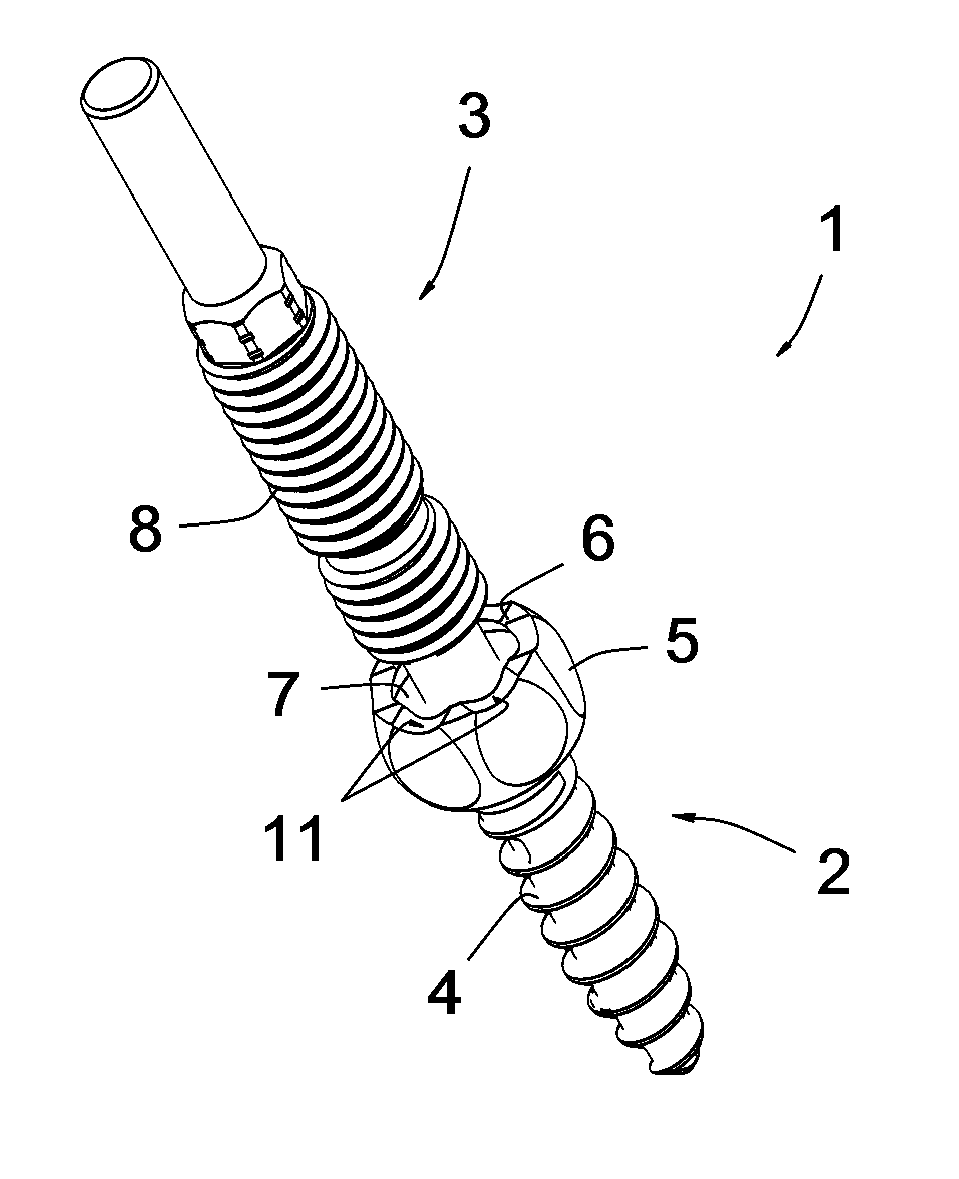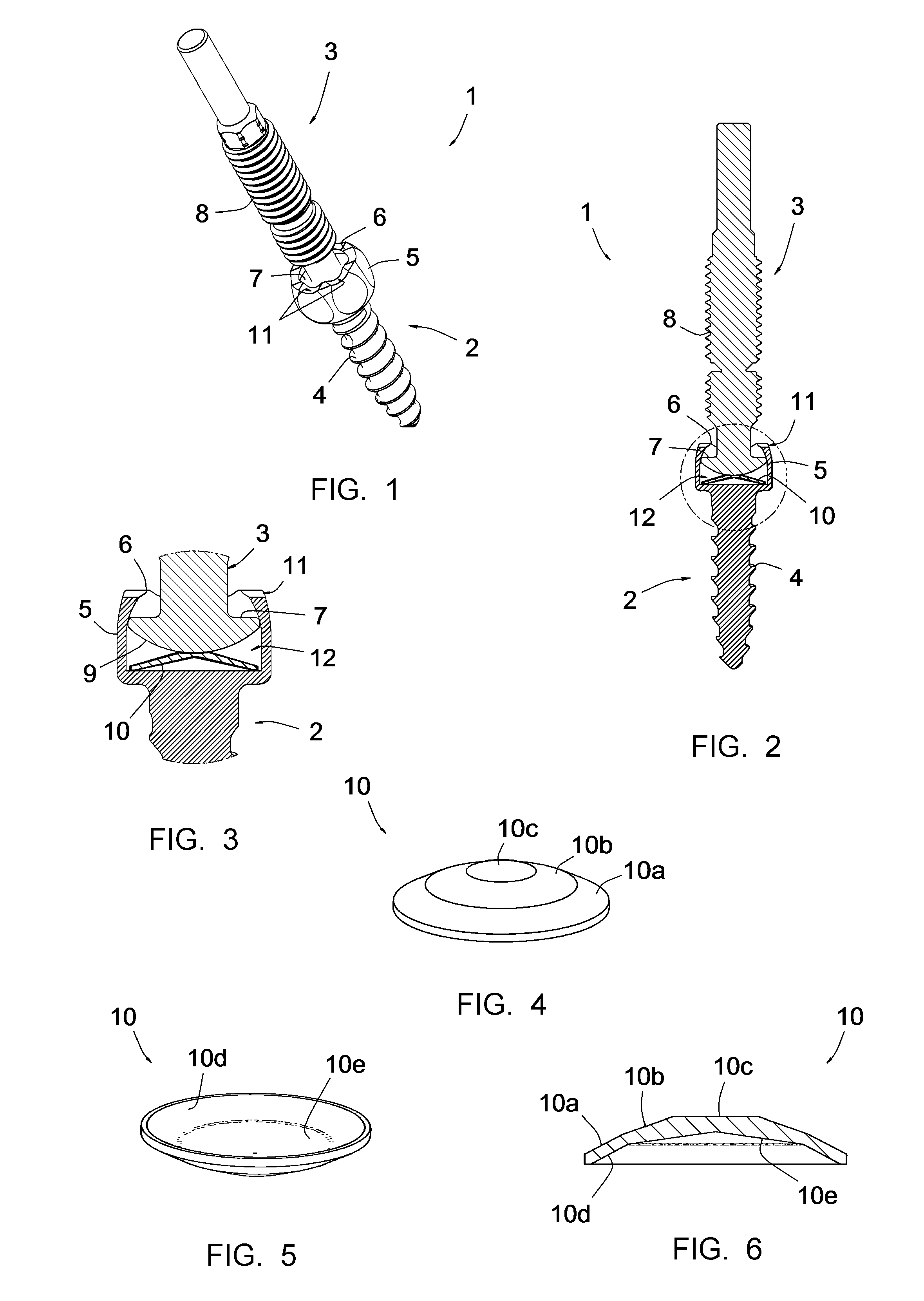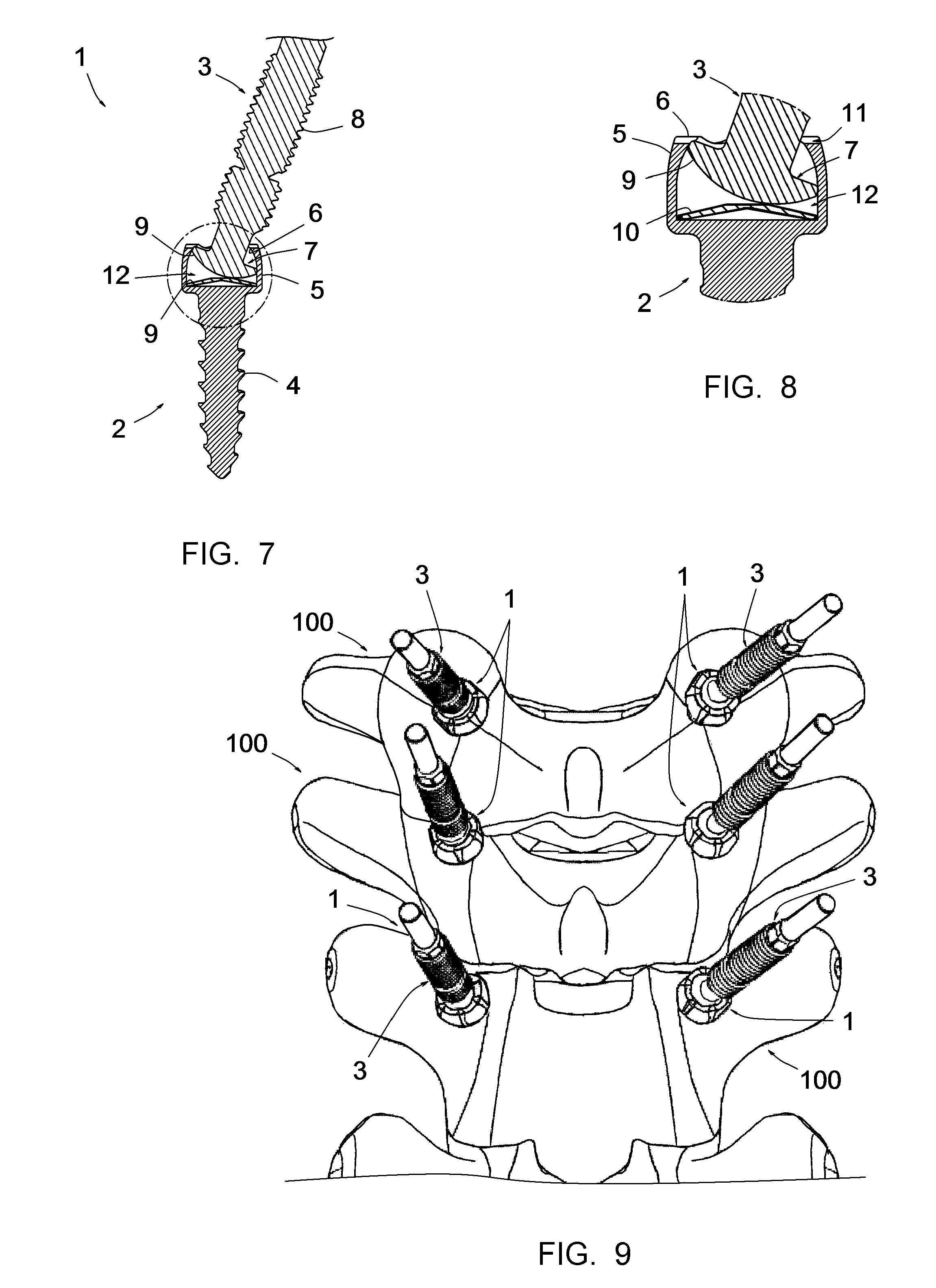Anchor member for vertebral osteosynthesis equipment
a technology of vertebral osteosynthesis and anchor member, which is applied in the field of anchor member for vertebral osteosynthesis equipment, can solve the problems of most often bothersome inclined positions
- Summary
- Abstract
- Description
- Claims
- Application Information
AI Technical Summary
Benefits of technology
Problems solved by technology
Method used
Image
Examples
Embodiment Construction
[0037]The anchor member 1 is of the “polyaxial” type, i.e. it comprises a bone anchoring base 2 and a threaded proximal stud 3, the stud 3 being articulated relative to said base 2. In the illustrated example, the base 2 comprises a threaded body 4 intended to be screwed in the pedicle of a vertebra 100 (cf. FIG. 9); the space 2 could also in particular comprise a laminar hook or a flexible link intended to form a loop around a vertebral lamina or a vertebral apophysis.
[0038]The base 2 comprises a head including a proximal wall 5 that inwardly delimits a proximal articulation cavity of the stud 3. This wall has a faceted outer surface, allowing the base 2 to be grasped by a screwing instrument in order to screw said base 2 into the pedicle of a vertebra. It includes a thickened peripheral proximal rim 6 curved toward the axis of the base 2, which ensures retention in said proximal cavity of the distal articulation portion 7. This rim 6 and the wall 5 have a series of eight notches 1...
PUM
 Login to View More
Login to View More Abstract
Description
Claims
Application Information
 Login to View More
Login to View More - R&D
- Intellectual Property
- Life Sciences
- Materials
- Tech Scout
- Unparalleled Data Quality
- Higher Quality Content
- 60% Fewer Hallucinations
Browse by: Latest US Patents, China's latest patents, Technical Efficacy Thesaurus, Application Domain, Technology Topic, Popular Technical Reports.
© 2025 PatSnap. All rights reserved.Legal|Privacy policy|Modern Slavery Act Transparency Statement|Sitemap|About US| Contact US: help@patsnap.com



